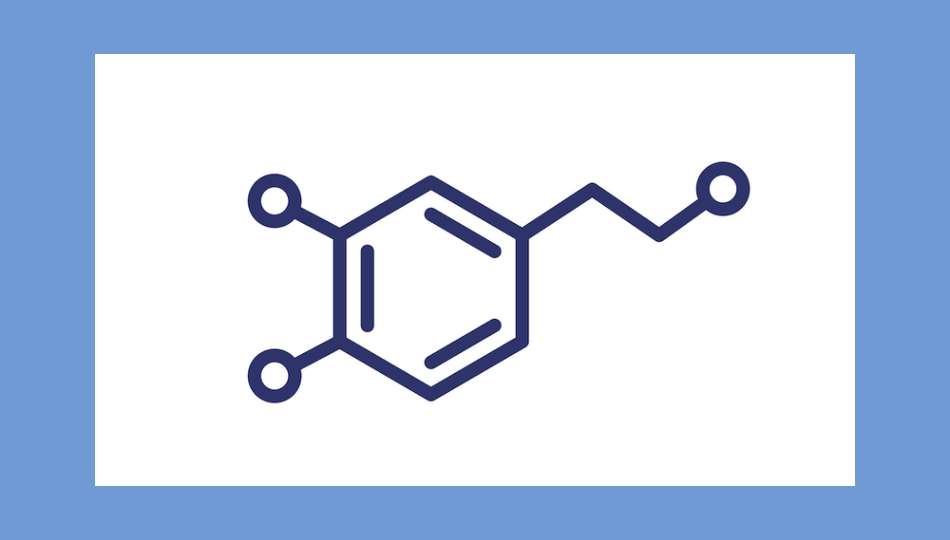(NOTE: An update regarding the search for Parkinson’s biomarkers appears at the bottom of this post.)
Assessments of Parkinson’s have long been made by a care provider’s observations of common symptoms. These symptoms include rest tremors, bradykinesia, masked facial expressions, and reduced arm swing. The most common assessment for Parkinson’s is the UPDRS, and it is used in many aspects of Parkinson’s care, from diagnosis to evaluating progression.
The utility of these physical assessments is limited. One limit arises from the fact that many variables influence how Parkinson’s symptoms appear from moment to moment. A more substantial limitation is that these assessments do not provide information about a person’s underlying biological processes and how they are related to Parkinson’s progression.
These and other limitations can be detrimental. For example, they can make an early diagnosis of Parkinson’s difficult, especially by non-Parkinson’s specialists. Moreover, using these assessments to measure the effectiveness of new treatments in clinical trials can slow the drug development process, partly because it is often hard to reliably separate a drug’s symptomatic effect from a possible disease-modifying result. Additionally, some trials last only a year or even less, and a clinician may be unable to physically detect changes in a person’s symptoms using just the UPDRS during such a short time frame.
Despite these issues, the reason UPDRS and other similar assessments remain central to treating and researching Parkinson’s is that there are very few established biomarkers for Parkinson’s.
What are Biomarkers?
A biomarker is a measurable biological feature that relates to a given condition. Biomarkers can be helpful in the diagnosis of a disease, in developing a prognosis, and in treating or curing a condition. For example, in thyroid and other cancers, the level of certain hormones is a biomarker that helps assess treatment response and can influence prognosis.
For a biomarker to provide helpful information, it must be associated with a specific condition. In this way, symptomatic presentations like rest tremor and bradykinesia are biomarkers. A biochemical example relative to Parkinson’s is the amount of dopamine transporter (DAT) in the brain: when a DaTscan, which measures levels of DAT in the brain, finds low levels of DAT, this implies that there is a low level of dopamine moving in the brain. Because decreased dopamine is a cardinal feature of Parkinson’s, the level of DAT in the brain is a biomarker for Parkinson’s, and this biomarker can assist in confirming a Parkinson’s diagnosis.
Biomarkers have already helped personalize treatments and improve the quality of care for other health conditions. For example, an improved understanding of biomarkers for cancer has facilitated the development of targeted, precision treatments.
Biomarker Utility
The biomarkers with the most utility will—
- Be detectable early, ideally before symptoms like tremors and bradykinesia appear
- Measure progression
- Aid in establishing a prognosis
- Be detectable quickly and inexpensively—a biomarker found in saliva or blood will be easier and less expensive to detect than a biomarker found in spinal fluid.
- Be quantifiable—a biomarker that can be quantified will be more broadly applicable than one that cannot. For example, the DaTscan’s essential utility is limited because it does not measure easily quantifiable data points; instead, the results are based on the visual identification of patterns.
- Be able to be evaluated consistently—a biomarker that can be assessed with consistent and reproducible results by different people and in other locations is preferable to one with subjective criteria or which we know admits of variations like the clinical assessments used today, like the UPDRS.
- Having a clear association with one condition—a biomarker that is associated with Parkinson’s by a specific and conclusive pattern will be more beneficial than one that could also be associated with a different condition. Again, the DaTscan is imperfect because a care provider cannot clearly distinguish between Parkinson’s and some other Parkinson’s using a DaTscan alone.
Current Parkinson’s Biomarkers
In addition to DAT levels and clinicians’ physical assessments, there are currently few other established biomarkers for Parkinson’s. These include the volume of water in parts of the brain, whether a person carries specific genetic variants, and olfactory dysfunction as measured by the University of Pennsylvania Smell Identification Test.
- Research to find additional biomarkers for Parkinson’s is ongoing. Some possible biomarkers being investigated include:
- Level and structure of specific proteins in spinal fluid
- Measures of neuroinflammation
- Neuromelanin levels
- Measures of cortical thickness
- Speech, breathing, and heart rate patterns
Benefits of Improving Understanding of Parkinson’s Biomarkers
Understanding biomarkers for Parkinson’s will help improve the quality of life for people with Parkinson’s in multiple ways.
Faster, Earlier Diagnosis
Biomarkers for Parkinson’s would give care providers clear, objective data points to support a diagnosis. An example of this use of a biomarker in another condition is the A1C level, which is frequently used in diabetes diagnosis and care.
A quantifiable biochemical biomarker could also help care providers diagnose Parkinson’s in the prodromal phase of Parkinson’s when relatively few symptoms are present. This could substantially improve the quality of life for people with Parkinson’s, especially once disease-modifying or disease-halting treatments are available.
Subtype Identification: Improved Treatments and More Efficient Drug Development
No two people living with Parkinson’s will experience the same symptoms in the same ways or on the same timeline. Moreover, no two people will respond similarly to treatments to help manage Parkinson’s symptoms.
These facts raise the question of whether Parkinson’s is best thought of as one condition that presents in many ways or whether Parkinson’s would be more accurately viewed as a syndrome or a family of needs with certain standard features but different optimal treatments and, potentially, different cures. Finding objective biomarkers will be critical in answering this question and others related to it.
Improving our understanding of biomarkers will also help optimize current treatments and clinical trial design by providing new insights and data points. For example, biomarkers may inform whether a person is a good fit for a specific medication or for participating in a particular trial. Additionally, biomarkers may provide researchers with ways to group trial participants to improve the evaluation of trial efficacy. These and other positive effects on trial design will accelerate the development of new treatments for Parkinson’s.
UpDate: April 13, 2023
An article that will appear in the May 2023 issue of The Lancet reports that researchers have discovered a significant biomarker for Parkinson’s. This report is available here.
How You Can Help
Participating in a clinical trial is the best way to help find new biomarkers. Two prominent studies investigating biomarkers are the Parkinson’s Progression Markers Initiative and the Cincinnati Cohort Biomarker Program. You can also find other trials at the Parkinson’s Disease Biomarker Program at the NIH, the Fox Trial Finder, and clinicaltrials.gov.
Further Reading
FDA—What Are Biomarkers and Why Are They Important?
FDA—Biomarker Qualification Program
Disease Modification and Biomarker Development in Parkinson’s
Deep Phenotyping of Parkinson’s
WANT MORE PRACTICAL ARTICLES LIKE THIS?
You can learn much more about living well with Parkinson’s today through our Every Victory Counts® suite of resources. Each manual is packed with up-to-date information about everything Parkinson’s. Click the link below to reserve your manual(s).
Thank you to our 2023 Peak Partners, Amneal, Kyowa Kirin, Sunovion, Every Victory Counts Gold Sponsor, and AbbVie Grants for supporting these must-have manuals. Additionally, we’d like to thank Barbara and Dale Ankenman, Abby and Ken Dawkins, Bonnie Gibbons, and Gail Gitin in loving memory of Gene Gitin, Irwin Narter, and Lorraine and J Wilson for their generous donations that allow us to make these resources available and accessible to all.

















